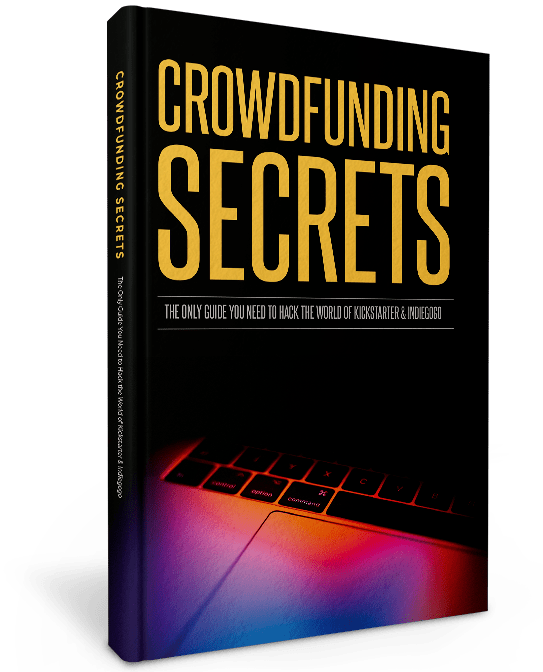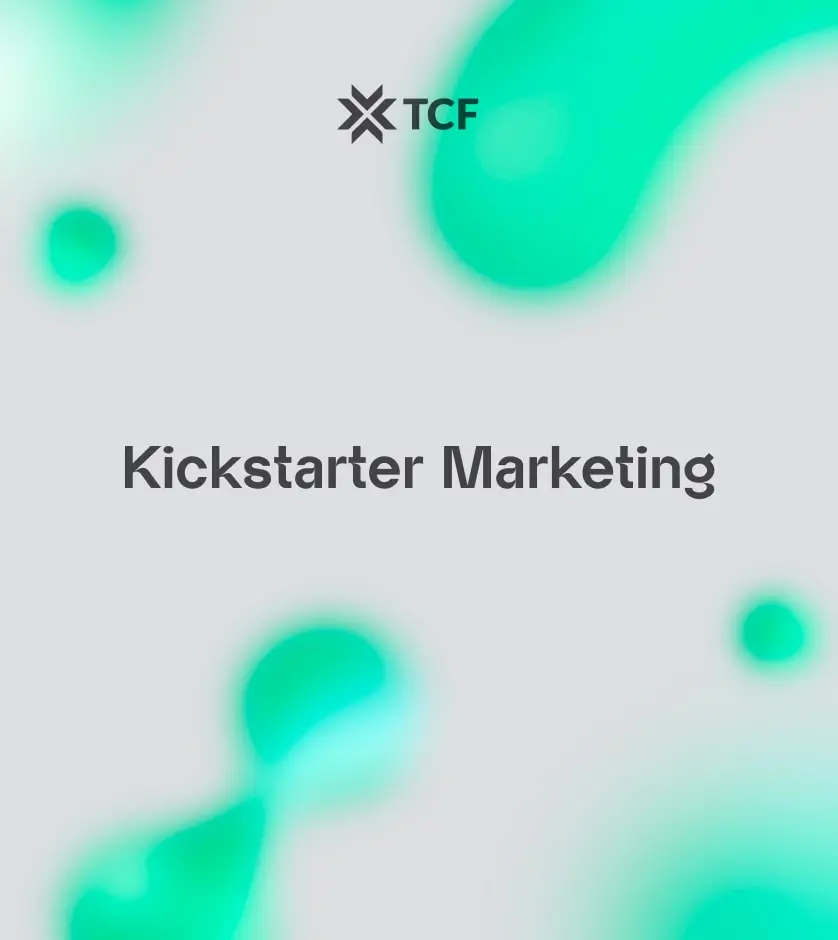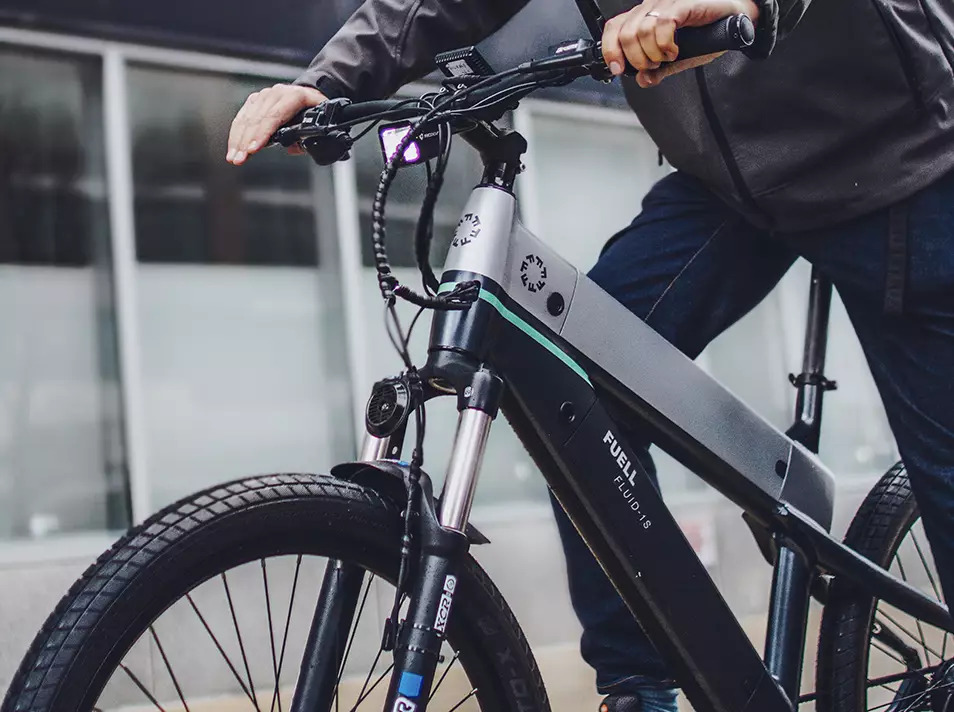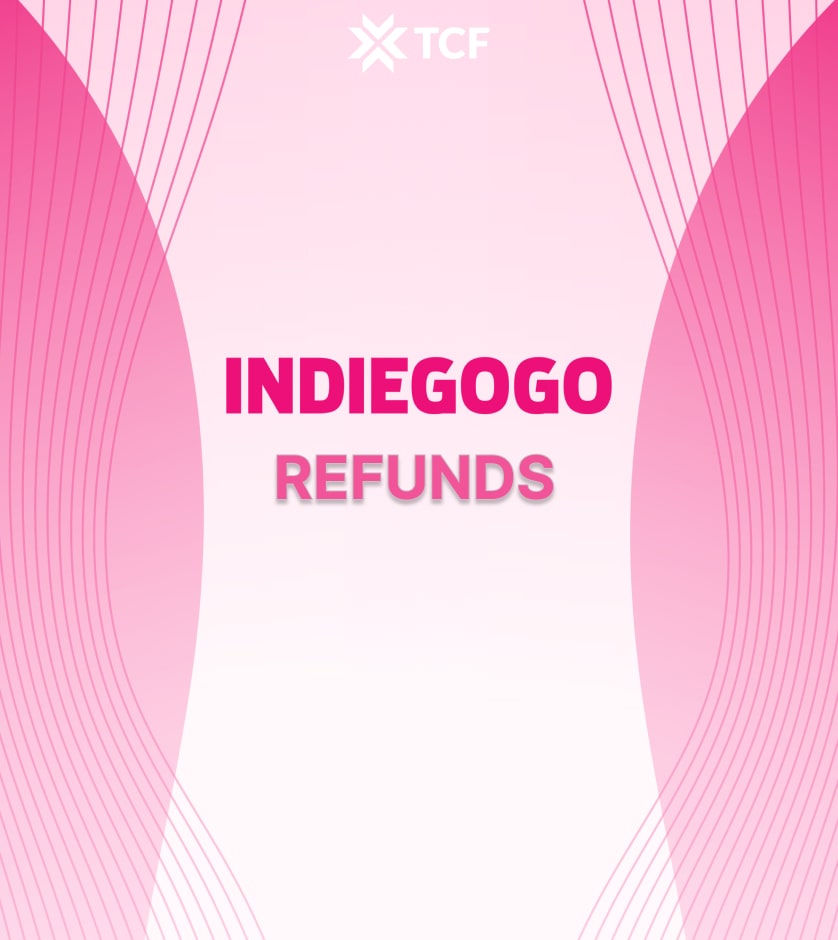Kickstarter has transformed the way early-stage businesses bring innovative products to life, allowing the creators to share their vision with the world, gather funds, and build a loyal customer base all at once. Crowdfunding is all about hope — the hope of bright-eyed inventors hoping to see their fresh concepts amongst the marketplace’s giants and the hope of curious and supportive individuals ready to back the next big thing. But hope, despite its significance, cannot carry a campaign alone. Kickstarter marketing is the bridge between creation and success; it is the essential tool that can transform hope into tangible results.
In the world of Kickstarter, a successful campaign is the essence of strategic marketing and precise execution. The nuances of reaching potential backers, translating their interest into conversions, and maintaining momentum throughout the campaign’s length are the critical components of a prosperous funding endeavor.
Indeed, for a campaign to reach the million-dollar status, it requires nothing short of a masterpiece in Kickstarter marketing tips. This isn’t just about throwing up a page and hoping for the best. It takes meticulous planning, a deep understanding of the product, and a blend of art and science to create a compelling and engaging story that resonates with the right audience.
Kickstarter Marketing: Pre-Launch Stage
Researching the Industry and Competitors
Before the first digital ad is devised or the inaugural social media post is published, extensive research must be undertaken. This involves understanding the chessboard of the industry—navigating through past campaigns in various fields to discern trends and pitfalls.
At TCF, we begin by evaluating the landscape of related product launches, consumer trends, and emerging technologies that intersect with a client’s product. We assess successes and isolate the elements behind their victories. We also scrutinize the missteps of campaigns to learn from their challenges. Here’s a more specific breakdown:
Understanding the Landscape
- Industry Trends:
- Identify similar crowdfunded projects in your category.
- See what’s resonating with backers and what hasn’t been successful.
- Use platforms like Kickstarter and Indiegogo for research.
- Competitor Analysis:
- Find direct competitors with similar products or concepts.
- Analyze their campaigns: funding goals, reward tiers, messaging, visuals.
- Learn from their successes and identify potential gaps in the market.
Research Tools
- Kickstarter & Indiegogo Search: Utilize search functions on these platforms to find similar projects. Look at successful campaigns and filter by category.
- Social Media Listening: Use tools like Brandwatch or Sprout Social to track conversations around your industry and competitor products on social media.
- Industry Publications: Look for relevant blogs, websites, and publications that cover your industry for trends and competitor insights.
Actionable Insights
- Identify funding sweet spots: How much are similar projects raising successfully?
- Craft compelling reward tiers: What do backers find valuable based on competitor offerings?
- Differentiate your project: What unique value proposition sets you apart?
Building a Strong Positioning and Strategy Behind the Campaign
After thorough research, TCF crafts a narrative that is not just about features and functionalities; it is about a complete overlay on the brand’s strategy. For GoChess, we didn’t just market a chessboard; we defined the intersection of technology and tradition in the centuries-old chess game. This involves building a story that resonates with chess lovers, technology enthusiasts, and anyone captivated by the blend of old and new.
This digital landscape requires an omnichannel approach, and our positioning pivots on designing a campaign that is visible in all relevant spaces—be it social media, targeted advertising, or email marketing. Our strategy encompasses content that educates, inspires, and encourages potential backers to be part of the narrative.
Unlock
the Full Potential of Your Kickstarter Campaign
Here’s a guide to show you how to get started in terms of positioning and Kickstarter strategy:
Clarifying Your Value Proposition
- Target Audience: Who is your ideal backer? Define their needs, interests, and online communities.
- Unique Selling Point (USP): What makes your product special? Why should backers choose you over alternatives?
- Problem & Solution: Clearly define the problem your product solves and how it offers a superior solution compared to existing options.
Crafting Your Kickstarter Strategy
- Compelling Campaign Narrative: Develop a story that resonates with your audience.
- Highlight the personal struggles that led to creating the product.
- Showcase the passion and expertise behind your project.
- Engaging Content & Visuals: Create high-quality visuals (pictures, videos) that showcase your product’s features and benefits.
- Utilize clear and concise language to explain your product in the campaign description.
- Reward Tiers with Value: Offer backers exciting and tiered rewards that incentivize them to contribute at different levels.
- Consider early-bird specials, limited edition products, or exclusive experiences.
- Marketing & Outreach Plan: Identify how you’ll reach your target audience – social media marketing, influencer outreach, press releases.
- Build pre-launch hype and excitement through targeted online advertising.
Setting Campaign Goals and Objectives
The importance of setting measurable goals cannot be overstated. TCF works closely with clients to define realistic expectations. Kickstarter campaigns have varying success rates based on the objective, the sector, and the resonance of the message. Our objective is not just to raise funds; it’s to create a community, generate ongoing interest, and set the stage for post-campaign sales and growth.
Here’s a high-level overview of how to define your campaign goals and objectives:
Overall Campaign Goal:
- Financial Goal: This is the core objective: how much money do you need to raise to bring your project to life?
- Consider production costs, marketing expenses, and potential setbacks.
- Research similar campaigns to understand realistic funding targets.
Pre-Launch Objectives (SMART Goals):
- Specific: Clearly define what you want to achieve before launch.
- Measurable: Set quantifiable targets to track your progress.
- Attainable: Be ambitious but realistic about what you can achieve.
- Relevant: Ensure your objectives support your overall campaign goal.
- Time-Bound: Set deadlines for achieving each pre-launch objective.
Here are some examples of SMART pre-launch objectives:
- Build an email list of 5000 potential backers by launch day.
- Generate 3000 website visits in the last month before launch.
- Secure positive media coverage in 20 industry publications.
- Achieve a 60% engagement rate on social media posts about the campaign.
Tips for Setting Goals:
- Break Down Your Funding Goal: Divide your overall funding goal into smaller milestones to track progress and celebrate achievements.
- Consider Stretch Goals: Set ambitious secondary goals for what you’ll do with additional funding if your campaign exceeds expectations.
- Be Flexible: Adapt your goals based on pre-launch results. If email list building is slow, adjust your Kickstarter strategy accordingly.
Conducting Lead Generation
Lead generation is an integral part of our pre-launch strategy. We use various incentives, such as exclusive early-bird pricing, add-ons, and special offers, to gather a list of interested potential backers. However, collection is just the first step. Warming these leads involves a delicate balance of engagement without overselling, nurturing without hounding.
During TCF’s led GoChess campaign, besides offering leads to become VIP backers in the welcome update, the team implemented a new strategy aimed at those who were already interested in the product but needed an extra push.
TCF created a special email marketing flow that would increase the credibility of GoChess and the creators company Particula before the launch. One week before the launch, when leads were ‘warmed-up’ enough and with enough trust and credibility established, we sent a ‘last chance of becoming a VIP’ email.
As a result, many leads made the reservation and claimed their VIP status, bringing them a step closer to becoming a backer.
Here are a set of steps to follow for your next lead generation:
Identify Your Ideal Backer
- Define your target audience: Who are the people most likely to be interested in your product?
- Understand their online behavior: Where do they spend time online? What social media platforms do they use?
- Craft targeted messaging: Tailor your communication to resonate with their specific needs and interests.
Capture Leads with Valuable Incentives
- Landing Page with Opt-In: Create a dedicated landing page for your campaign.
- Offer enticing rewards (discounts, early access) in exchange for email addresses.
- Social Media Lead Magnets: Provide downloadable guides, cheat sheets, or exclusive content related to your product or industry.
- Contests & Giveaways: Host contests or giveaways on social media to generate excitement and collect email addresses.
Content Marketing to Attract and Nurture Leads
- Blog Posts & Articles: Share informative and engaging content about your industry or product development process.
- Social Media Engagement: Post regularly on relevant platforms, fostering discussions and building anticipation.
- Email Marketing Campaigns: Nurture your email list with updates, sneak peeks, and exclusive offers leading up to launch.
Leverage Existing Communities
- Industry Forums & Groups: Participate in online communities relevant to your product category.
- Share valuable insights and build relationships with potential backers.
- Influencer Outreach: Collaborate with relevant influencers who resonate with your target audience.
- Explore product reviews, social media mentions, or potential co-marketing opportunities.
Remember:
- Quality over Quantity: Focus on building a strong community of engaged leads who are genuinely interested in your product.
- Data & Analytics: Track your lead generation efforts and analyze what’s working best. Optimize your strategy based on the data.
- Pre-Launch Hype: Use your lead generation efforts to build excitement and anticipation for your Kickstarter launch.
Understanding Pricing Strategy, Rewards, and Add-Ons
Pricing is a critical consideration and requires a harmonious blend of being competitive and value-driven. The rewards structure must be enticing enough to incentivize backing, and the add-ons should be complementary to the main product without diluting its appeal.
TCF and the project teams we work with spend months finessing these elements, often making iterative changes, adjusting based on the feedback of the target audience, and ensuring that when the campaign goes live, every aspect is fine-tuned to perfection.
By using a subscription-reservation funnel during the lead generation stage, we validate the VIP price on the reservation page, where we ask subscribers to reserve their VIP price. This means they will get the product at a secret VIP price, which is less that the average crowdfunding price.
The purpose of this tactic is to see if the average crowdfunding price would perform as well as the VIP price. The average CF price was $399 for GoChess 4XRs. So we a/b tested the price with the VIP $379 price on the reservation page.
The results showed us that it performed the same way as $379, so the creators of GoChess could use $389 or $399 as the Super Early Bird price or average crowdfunding price.
Here’s a simplified breakdown of what you need to consider for your next campaign:
Understanding Your Costs
- Production Costs: Calculate the cost per unit to manufacture your product, including materials, labor, and overhead.
- Fulfillment Costs: Factor in packaging, shipping, and any potential customs fees.
- Platform Fees: Kickstarter charges a 5% platform fee and payment processing fees (3-5%) on successful campaigns.
Setting Your Core Reward Price
- Cost-Plus Approach: Add a profit margin to your total production and fulfillment costs to determine the base price.
- Market Research: Analyze competitor pricing for similar products and identify potential sweet spots for your audience.
- Value Perception: Ensure your price reflects the perceived value your product offers to backers.
Crafting Compelling Reward Tiers
- Offer a Range of Tiers: Cater to different budgets with entry-level rewards (discounted product) and premium tiers (exclusive extras).
- Value Proposition for Each Tier: Each tier should offer additional value beyond just the core product.
- Consider early-bird discounts, limited edition items, or personalized experiences.
- Scarcity & Urgency: Create limited quantities for certain tiers to incentivize early backing.
Considering Add-Ons
- Boost Your Average Order Value: Offer additional items backers can purchase alongside the core product.
- Think accessories, replacement parts, or complementary products.
- Planning & Production: Ensure add-ons are feasible to produce and fulfill alongside your core reward tiers.
Our Million-Dollar Crowdfunding Campaigns
Kickstarter Marketing: Campaign Launch Stage
Crafting a Captivating Crowdfunding Campaign Page
The campaign page is the heart of any Kickstarter initiative. The visual and textural story it tells is crucial. Every graphic, every campaign video, and every line of copy must align with the overarching strategy. The messaging should be consistent, compelling, and concise.
Here’s your go-to checklist for the crowdfunding campaign page’s launch:
The Power of First Impressions
- Compelling Headline: Hook potential backers with a clear and concise statement that captures your project’s essence.
- Hero Image/Video: Use high-quality visuals that showcase your product in action and its key features.
Storytelling that Sells
- The Problem & Solution: Clearly explain the problem your product solves and how it offers a unique and valuable solution.
- The Passion Behind the Project: Share your personal story and the inspiration that led to creating your product. Build an emotional connection with potential backers.
- The Journey So Far: Showcase your development process, prototypes, and any milestones you’ve achieved. Demonstrate your dedication and progress.
Clarity is Key
- Project Description: Provide a clear and concise explanation of your product’s features, benefits, and target audience.
- Reward Tiers Breakdown: Outline each reward tier with detailed descriptions, pricing, and quantities (if limited). Use high-quality images to showcase the rewards offered at each tier.
- Timeline & Production Plan: Set realistic expectations with a clear timeline for production, fulfillment, and delivery of rewards.
Building Trust & Transparency
- The Team Behind the Dream: Introduce your team members, highlighting their expertise and experience relevant to the project.
- Risks & Challenges: Acknowledge potential challenges and your plan for overcoming them. Transparency builds trust with backers.
- Use of Funds: Clearly explain how the funds raised will be used, including production costs, marketing, and fulfillment.
Call to Action
- Make it Easy to Back: Clearly display a prominent “Back This Project” button with a call to action.
- Social Sharing Buttons: Make it easy for backers to share your campaign with their network.
- Engaging with Comments & Questions: Proactively respond to comments and questions to demonstrate your commitment to the community.
Remember:
- Keep it Concise & Scannable: People are more likely to skim online content. Use bullet points, clear headings, and high-quality visuals to break up text.
- Mobile-Friendly Design: Ensure your campaign page displays well on all devices, as many users browse on smartphones.
- Proofread & Edit: Typos and grammatical errors can create a negative impression. Double-check your copy before launch.
Engaging Already Created WhatsApp Groups (During the Lead Gen), Announcing about the Launch
During the lead generation phase, we leverage the groups to inform and excite potential backers. Through exclusive sneak peeks, we prepare them for the forthcoming launch, priming their interest to convert to action on day one of the campaign.
Organizing Backer Community Newsletter Promotions for the Launch Day
Our backer community newsletters are an insider’s gateway to the launch day. The conversation around the product, the community’s anticipation, and their role in the project’s success are woven into each newsletter. These create a buzz that is both controlled and contagious.
Pre-Launch Nurturing:
- Targeted Lists & Segmentation: Segment your email list based on interests or demographics for more relevant communication.
- Don’t send generic newsletters to everyone.
- Value-Driven Content: Offer exclusive content like sneak peeks, behind-the-scenes insights, or early access to information about your project.
- Building Excitement: Use your newsletters to gradually build excitement and anticipation for your launch day.
- Highlight key milestones, showcase progress, and share positive press mentions.
Compelling Calls to Action:
- Early Bird Incentives: Offer exclusive discounts or rewards to subscribers who back your project within the first few days of launch.
- Countdown Timers: Create urgency by including countdown timers in your newsletters leading up to launch day.
- Clear Links & Action Buttons: Make it easy for subscribers to support your campaign by including clear links to your Kickstarter page and prominent “Back Now” buttons.
Engagement & Community Building:
- Feature Backer Stories: Highlight stories and testimonials from early supporters to build trust and inspire others.
- Interactive Content & Polls: Include interactive elements like polls or Q&A sessions to spark conversations and engage your audience.
- Social Sharing Incentives: Encourage social media sharing by offering bonus entries for contests or additional rewards for sharing your campaign with their networks.
Engaging with Backers and Responding to Inquiries Promptly
High engagement on the platform is an imperative snapshot of the campaign’s vitality. Every question answered, every comment acknowledged, and every concern addressed lends a personal touch to what might otherwise be a distant, digital interaction.
Incentivizing People to Back in the First 12 Hours with Special Offers
The first hours of a campaign’s launch can set the tone for the entire funding duration. To hit the ground running, we employ special incentives such as limited edition rewards, lower specially-priced bundles, or additional tiers not previously available. These create a sense of urgency and excitement, driving an influx of early funding.
In terms of timing, it’s best to aim for the last week of lead generation (i.e. the week before the actual campaign launch.) In the case of GoChess, we reached out to all our audiences, especially on social media to let them know that those who back GoChess within the first 12 horse will received a special add-on for free.
After the first 12 hours of the live campaign, our team sends out reminder emails abou the launch and extend the offer for an additional 12 hours. This in turn generates a large amount of activity within the first day.
Kickstarter Marketing: Post-Launch Stage
Maintaining Momentum Through Consistent Updates
Post-launch, maintaining the momentum is about telling the story of progress—be it through sharing milestones, announcing stretch goals, or unveiling features enabled by increased funding. Regular updates keep the campaign alive and its community closely engaged.
Keep these points in mind:
Regular Communication is Key:
- Set a Schedule: Plan your update frequency – weekly, bi-weekly, or based on milestones achieved. Consistency is vital.
- Variety in Content: Don’t just focus on fundraising updates. Share interesting content like design tweaks, production insights, or behind-the-scenes glimpses.
- Multiple Channels: Utilize various platforms like Kickstarter updates, email newsletters, and social media posts to reach your audience.
Highlight Progress and Milestones:
- Celebrate Achievements: Share photos or videos showcasing production progress, completed prototypes, or manufacturing partnerships secured.
- Transparency with Challenges: Address any setbacks or delays honestly. Outline solutions and revised timelines to maintain backer trust.
- Gratitude & Appreciation: Thank your backers for their support and express your excitement to bring their rewards to life.
Building Community & Engagement:
- Respond to Comments & Questions: Proactively answer backer inquiries on Kickstarter comments, social media platforms, and emails.
- Addressing concerns promptly fosters a sense of community and builds trust.
- Contests & Giveaways: Host fun contests or giveaways related to your project to keep backers engaged and generate social media buzz.
- Exclusive Content for Backers: Offer exclusive content like early access to product updates, downloadable materials, or sneak peeks at future plans.
The Power of Visuals:
- High-Quality Images & Videos: Use captivating visuals to showcase product development, production processes, and the final product coming together.
- Behind-the-Scenes Glimpses: Offer glimpses into your creative process, team collaborations, or inspiration behind the project.
- Visualize the Impact: Share visuals that showcase how your project will benefit the end user or the positive impact it will create.
Remember:
- Post-Launch is Not an Afterthought: Consistent updates are crucial for maintaining backer excitement and ensuring a successful campaign.
- Tailor Your Content: Adapt your updates based on backer feedback and interests. Keep your audience engaged with relevant and valuable content.
- Celebrate the Finish Line: Conclude your campaign with a final update expressing gratitude, sharing the final product (if applicable), and outlining the fulfillment timeline.
Leveraging Backer Feedback for Product Improvement
Backer feedback isn’t just about post-campaign sales; it contributes to product iteration. We encourage comprehensive surveys to gain insight into product satisfaction, soliciting suggestions for improvements and additions that resonate with the initial crowd in order to enhance the product for mass appeal.
Backer feedback is a goldmine for product improvement! Here’s how you can leverage it effectively during your Kickstarter marketing campaign’s post-launch phase:
Gathering Valuable Insights:
- Post-Campaign Surveys: Send targeted surveys to backers after the campaign ends.
- Ask specific questions about their experience, product features, and potential improvements.
- Open Communication Channels: Encourage backers to continue providing feedback through dedicated forums, social media polls, or email addresses.
- Social Listening: Monitor online conversations on social media platforms to identify recurring themes and areas for improvement.
Analyzing & Prioritizing Feedback:
- Identify Trends & Themes: Don’t get overwhelmed by individual suggestions. Analyze common feedback points to understand what resonates with a larger group.
- Prioritize Based on Impact: Focus on feedback that impacts core functionality, user experience, or addresses widespread concerns.
- Feasibility & Resources: Consider the feasibility of implementing suggested changes. Prioritize improvements that align with your resources and production capabilities.
Engaging Backers in the Process:
- Acknowledge Feedback: Publicly acknowledge your appreciation for backer feedback and highlight your commitment to improvement.
- Transparency & Communication: Share insights gleaned from feedback and outline your plan for incorporating valuable suggestions.
- Keep backers informed about the product development process and potential changes.
- Offer Exclusive Previews: If implementing major changes, consider offering backers exclusive previews of the improved product as a token of appreciation.
Leveraging Feedback for Kickstarter Marketing:
- Showcase Improvements: Publicly showcase product improvements based on backer feedback.
- Use this as post-launch Kickstarter marketing content to demonstrate your commitment to quality and responsiveness to feedback.
- Highlight Backer Impact: Feature positive testimonials from backers whose suggestions were implemented.
- This builds trust and credibility for your brand and future endeavors.
Remember:
- Feedback is a Gift: View backer feedback as a valuable opportunity to refine your product and enhance the user experience.
- Be Selective & Transparent: Not all feedback can be implemented. Communicate clearly which suggestions are being considered and why.
Providing Excellent Customer Support
Post-campaign is also the time to set and manage customer expectations. Excellent customer support can turn a one-time backer into a repeat customer and an active campaign supporter into a brand advocate.
Conducting Weekly Email Marketing
Email marketing is a powerful medium for personal engagement. TCF’s weekly email content includes highlights of the campaign, exclusive insights, and information directly from the creators that foster a sense of belonging and exclusivity in the community.
Here are some helpful tips to craft compelling content and maintain momentum:
Content Variety is Key:
- Don’t be Repetitive: Avoid just focusing on fundraising updates.
- Offer a mix of content that informs, entertains, and builds anticipation for your product’s arrival.
- Post-Launch Progress: Share exciting updates on production milestones achieved, like manufacturing partnerships secured or product assembly progress.
- Behind-the-Scenes Glimpses: Offer exclusive peeks into your design process, team collaborations, or inspiration behind the project.
- Educational Content: Provide valuable content related to your product’s functionality, usage tips, or potential benefits.
- Consider creating “how-to” guides or explainer videos.
Building Backer Community:
- Feature Backer Stories: Showcase stories and testimonials from backers expressing their excitement or sharing their creative uses for the product (if applicable).
- This fosters a sense of community and encourages others.
- Interactive Content & Polls: Include interactive elements like polls or Q&A sessions to spark conversations and engage your audience.
- Ask for feedback on potential future product features or colors.
- Contests & Giveaways: Host fun contests or giveaways related to your project to keep backers engaged and generate social media buzz.
- Offer exclusive prizes for email subscribers.
The Power of Appreciation:
- Thank You Emails: Express sincere gratitude to backers for their support.
- Highlight the impact of their contribution in bringing your project to life.
- Exclusive Offers: Provide exclusive discounts or early access to future products or services as a token of appreciation.
- Birthday & Anniversary Emails: Personalize the experience by sending birthday or campaign anniversary emails with special offers or greetings.
Call to Action & Social Proof:
- Social Sharing Buttons: Make it easy for backers to share your project updates and positive testimonials on their social media.
- “Refer a Friend” Programs: Encourage backers to refer friends and family by offering referral bonuses or discounts.
- Pre-Order Opportunities: If applicable, consider offering pre-order opportunities for future product iterations based on backer feedback.
Influencer and Journalists Outreach
The reach of a campaign extends beyond the platform. TCF taps into the wider media ecosystem by connecting with influencers and journalists who can share the campaign, driving more eyes and interest to the product.
When reaching out to influencers and journalists for your Kickstarter marketing post-launch campaign, keep these key points in mind:
Building Relationships, Not Just Transactions:
- Target the Right People: Research influencers and journalists whose audience aligns with your product and brand.
- Don’t chase vanity metrics; prioritize genuine interest and relevance.
- Offer Value Proposition: Focus on how your product benefits their audience, not just your campaign.
- Can you offer exclusive content, early access, or a compelling story?
- Authenticity Over Hype: Avoid overly promotional language.
- Highlight the unique features and benefits your product offers, and how it resonates with their content.
Crafting Effective Outreach:
- Personalize Your Message: Avoid generic emails. Mention a specific article or post that caught your attention and why their audience would be interested in your product.
- Keep it Concise & Compelling: Get straight to the point. Briefly introduce yourself, your project, and the value proposition for them and their audience.
- Offer Multiple Engagement Options: Don’t just ask for a review. Offer options like interviews, product giveaways, or early access experiences.
Post-Launch Considerations for Journalists:
- Newsworthy Updates: Highlight significant milestones achieved post-launch, like exceeding your funding goal or forming key partnerships.
- Offer exclusive insights or data not previously shared.
- Industry Trends: Position your product as part of a larger industry trend and offer expert commentary or analysis.
Additional Tips:
- Follow Up, But Don’t Be a Pest: Send one follow-up email if you don’t hear back initially.
- Respect their time and avoid being overly persistent.
- Track Your Efforts: Use a CRM or spreadsheet to track outreach attempts, responses, and potential collaborations.
- Show Appreciation: Publicly thank influencers and journalists who feature your product, even if it’s not a full review.
Daily Monitoring of Campaign Conversions and Performance of All Promotional Directions
Monitoring the campaign is a 24/7 job. TCF has dedicated teams overseeing each promotional direction, adjusting and pivoting as needed to maintain engagement and maximize performance.
Make Your Project The Next 7-Digit Crowdfunding Campaign
Running Special Offers and Deals
Special offers keep the campaign dynamic and create community engagement points. These can be flash sales, bundle deals, or timed exclusives that add a layer of excitement to the marketing mix.
These are some tips for running special offers and deals to keep your momentum going and generate excitement in the post-launch phase:
Rewarding Early Supporters:
- Limited-Time Discounts for Backers: Offer exclusive discounts to Kickstarter backers for a limited time after launch. This incentivizes early purchases and rewards their initial support.
- Free Shipping or Add-Ons: Provide free shipping or bonus add-ons for backers who pre-order during the post-launch window. This sweetens the deal and encourages early sales.
- Early Access & Beta Testing: Grant early access to your product or beta testing opportunities to Kickstarter backers. This fosters a sense of loyalty and valuable feedback.
Creating a Sense of Urgency:
- Flash Sales & Limited Quantities: Host flash sales with limited quantities available to create a sense of urgency and encourage immediate purchases.
- Countdown Timers: Implement countdown timers on your website and social media platforms to highlight the limited-time nature of your offer.
- Early Bird Tiers: Replicate your Kickstarter tiers with an “early bird” discount for a limited period after launch. This incentivizes faster purchases.
Building on Backer Relationships:
- Kickstarter Backer Exclusives: Offer exclusive product variations, colors, or bundles only available to Kickstarter backers. This shows appreciation for their initial support.
- Personalized Discounts: Segment your email list and offer personalized discounts based on backer tiers or contribution amounts. This fosters a sense of value and recognition.
- Bonus Content & Downloads: Provide downloadable guides, tutorials, or exclusive content related to your product as a bonus for early purchasers. This adds value to their purchase.
Spreading the Word:
- Social Media Announcements: Announce your post-launch offers and deals across your social media platforms to generate excitement and reach a wider audience.
- Email Marketing Campaigns: Inform your Kickstarter backers and email subscribers about your special offers to encourage pre-orders and early purchases.
- Influencer Marketing: Collaborate with relevant influencers to promote your post-launch deals and reach their engaged audience.
By implementing these tips for special offers and deals, you can extend the excitement of your Kickstarter campaign, generate additional sales, and build a strong customer base for your product in the post-launch phase.
Conclusion
In conclusion, the path to a million-dollar Kickstarter campaign is not a solitary one. It’s a collective effort that marries thoughtful creation with strategic storytelling, data-driven decision-making with creative freedom, and precise execution with adaptive management.
While no two campaigns will follow the exact same trajectory, the underlying principles of effective Kickstarter marketing remain constant. The Kickstarter universe is full of potential; it’s time to harness that potential and turn it into prolific projects that define tomorrow’s innovation.










Comments